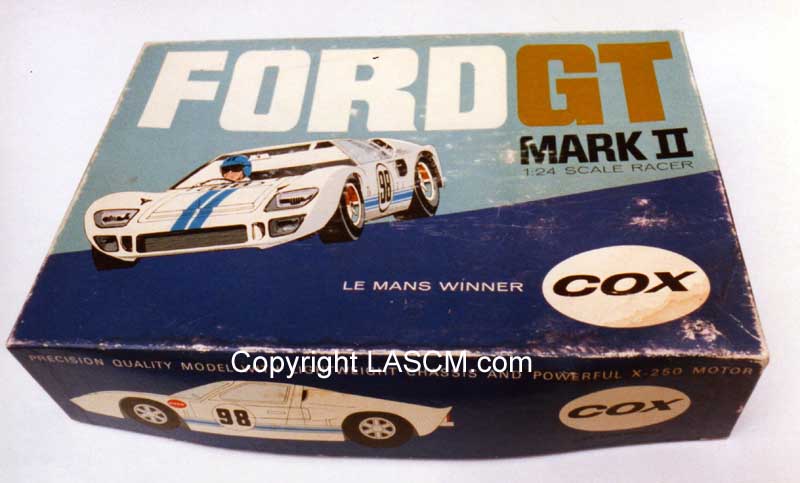Description
It is always a lot of fun for researchers in the past history of our favorite hobby, to discover a previously unknown product and even more fun to find one that never made it to actual production, but was advanced enough in its concept and testing to have justified the application of a patent.
Unfortunately and like for a majority of “overnight inventions”, the product is often already obsolete or simply the function of an already passed fad, or even a totally incompetent design in a competitive marketplace.
This is the case for a previously unknown slot car company by the name of “Race Rite”. The little we know is that this would-be business was established in Kentucky in early 1966 and was named “L.A. Folks & Associates Inc.” and based in Mayfield. From what we know, it failed before reaching the marketplace.
Further research by the LASCM curator led nowhere, so we are left with what survived and that suddenly showed up at a public auction, a total of three prototype cars and a couple of prints of chassis and bodies.
The car was called “Targa Florio GT Coupe” and had a vacuum formed body of a “dream car” streamlined coupe, the kind commonly called in vintage slot car circles as a “thingy”.
Engineering design for several versions of the cars, all seemingly powered by the Mabuchi FT36D motor already used by the vast majority of American slot car manufacturers in 1965, included inline and sidewinder versions and even a twin-engine chassis!
None of the three surviving cars appears to follow the prints that closely, and none is fitted with the drop-arm or crude body-mounting method seen on the prints. All three use the motor as a structural chassis member. A stamped aluminum bracket affixed to the motor with a C-clip also supports the rear axle mounted on flanged ball bearings. Another stamped-aluminum front end piece screwed to the endbell supports the front axle and guide flag. Both Revell, Champion and Ulrich will later use a similar design and it is hard to tell which had a right if any to a design patent for this innovation. In any case and at the time when the design was produced, it was already obsolete and would never have been a world beater.
One of the prototypes, likely the earliest made,is fitted with a Stormer Lotus-30 body and a Mabuchi FT36D, while the two other cars use the smaller FT16D motor. The prototypes use Dynamic guides and what appears to be Classic wheels. It is likely that the Lotus body was used because the tooling for the GT Coupe was not completed yet.
Both the front and rear chassis pieces were produced from permanent tooling, showing that the principals at “L.A. Folks” invested in stamping dies besides spending money to apply for a patent. Added verbiage on the two prints shows that they apparently tried to raise capital to pursue their venture, but that likely failed. In any case, these new slot cars brought nothing new or more effective than the hundreds already on the market and until now, this failed folly was never heard of again… At the end of the day, it makes for yet another series of interesting items for the LASCM, the world’s largest collection of 1960s vintage slot cars.













